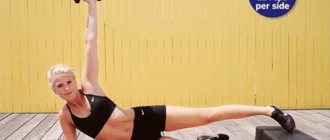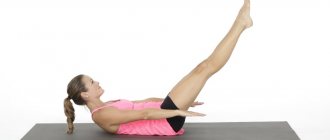Meaning
As often happens, our object of study is inextricably linked with the noun, so let’s turn to it. For example, static ones are:
- pose;
- drawing;
- hero.
Think of people who pose for artists, and you will understand what static means when it comes to body position. A hero or a literary character is passive when there is no dynamics and development in them, that is, as they were at the beginning of the work, that is how they come to its ending. A static drawing is one that does not show movement.
When it comes to art or the physical position of the body in space, everything is more or less clear. Staticity is a difficult to define characteristic when it comes to society or a person. But first, the analogues.
What is axial load?
An axial load is the one at which vertical pressure occurs on the spinal column, that is, on the axis of the body . The debate about the benefits and harms of such training does not subside. Supporters urge not to give up exercises with axial load even if you have back problems, but to choose the right complex.
They are based on the benefits of such exercises:
- Strengthening the muscle corset in a much shorter time compared to other types of physical activity.
- Formation of correct posture.
- Endurance training.
- Building a beautiful sculpted body.
During the exercises the following processes occur:
- The fat burning process is accelerated. When following a diet, weight is lost due to the waste of carbohydrates, and when doing strength training, it is due to the loss of adipose tissue.
- A person spends a lot more calories. This is explained by the fact that the process of burning calories continues for a long time after training, since the muscles need energy to recover.
- Bone tissue thickens. During exercise, osteocalcin, a marker of bone formation, is better produced.
- Joint flexibility develops. Contrary to popular belief about joint stiffness during strength training, weightlifters can even be compared to gymnasts in terms of flexibility.
- Stress resistance develops. The speed of hormonal restoration after a stressful situation directly depends on the volume of muscle mass.
- The cardiovascular system is strengthened. When exercising with weights, blood pressure normalizes and capillary circulation improves.
- The risk of developing dementia and Alzheimer's disease is prevented. Strength exercises help reduce homocysteine, the main culprit in senile dementia.
Opponents of strength training perceive axial loading as the worst of evils.
They provide the following arguments as evidence::
- With an axial load, compression pressure occurs on the vertebral discs, they decrease in height, which is strictly contraindicated for hernias, osteochondrosis, and scoliosis.
- If done incorrectly, it is easy to get seriously injured and remain disabled.
- If the abdominal muscles are untrained, then prolapse of the internal organs may occur, especially in women.
- Joints wear out faster, cartilage tissue is destroyed.
Synonyms
It is much easier to walk along the bridge of synonyms to new knowledge than without any supports, so we will not deviate from tradition. How can we replace the term “static”? Answer below:
- immobility;
- inactivity;
- stagnation.
We don’t have a lot of synonyms this time, what can we do, not everything is Maslenitsa for the cat. And besides, static is a rather difficult term when it comes to essential understanding. For example, how to distinguish between stability and static? More on this below, but first we will reveal the meaning of the concept of “stagnation”.
What determines the range of motion in the spine?
In the direction from front to back, mobility in men is usually greater. On the other hand, in women, mobility usually exceeds during lateral flexion.
Movement in the spine between the vertebrae occurs essentially in the area of the discs and facet joints. Movement is regulated by the flexibility of the intervertebral disc and the inclination of the articular surfaces. All back movements require free sliding of the articular surfaces. At the same time, the movement of any one vertebra is quite minimal; the movement of 24 vertebral segments in total is significant.
The anterior convexity of the cervical and lumbar regions decreases with flexion, and for cervical lordosis it is slightly backward in full flexion.
Flexion at the waist is the most significant in terms of volume. About 75% of all flexion of the back below the neck occurs in the lumbar spine, and about 70% of all lumbar flexion occurs in the lumbosacral-iliac joint. Typically, a degree of lumbar flexion will only slightly reduce the severity of lordosis, so significant lumbar flexion may need to be achieved by rotating the hip joints. In fact, some people can lean forward to touch the floor with little change in the curvature of the spine.
Movements in the spine and biomechanics of the spine ensure proper distribution of the load on the spine.
Stagnation and static
The term comes from economics, meaning the stagnation of production and trade for months or years. Naturally, at the same time, wages are falling and unemployment is rising. People's lives are getting worse and worse. There is no growth or development.
Now the very definition has gone beyond economic boundaries and has come to mean stagnation in almost any area. For example, in psychological articles or those that claim this title, stagnation means static - this is an even more appropriate word, but the authors still prefer stagnation because of its Latin origin.
For example, when there is an ordinary stagnation in the relationship between a man and a woman, and the husband and wife are mortally tired of each other, they speak of stagnation. From some point of view this is true, because stagnation is a characteristic of a system that is about to collapse. Therefore, a marriage falling apart fits the definition. Now we understand: staticity also has such a synonym.
How is body balance maintained?
Although the spine is often viewed as the central axis of the body, this is only true when the body is viewed from the front or back. When viewed from the side, the spine lies distinctly behind the rib cage. It is located much closer to the central axis in the cervical and lumbar regions. A larger volume also lies anterior to the midline in the head.
In terms of balance, the seven cervical vertebrae and five lumbar vertebrae curve anterior to the center of gravity to compensate for the twelve thoracic vertebrae that curve posterior to the center of gravity. In women under the age of 40, the physiological curves in the spine are smaller than in men, and thoracic kyphosis increases with age, regardless of gender.
The degree of deviation from the midline of the cervical and lumbar lordosis is controlled to a large extent by the strength of the trunk extensors (back muscles), the weakness of the flexors and their ability to stretch. Keep in mind that the fruit is crescent-shaped. When the child stands on his feet, lumbar and lordosis begins to form
The stability and balance of the spine depends on a number of factors, but it is mainly maintained by the relationship of the vertical force of attraction of the line of vertebral segments. When the weight is in balance with the line of physiological curves, muscle activity of the trunk is minimal. When there is an imbalance in the curves of the spine, with constant pathological postures, fatigue of the muscular-articular frame of the spine occurs and structural deformations of the spine occur - pathological kyphosis of the h/o spine, scoliosis.
The position of the head is quite balanced in the frontal plane where the gravitational line passes behind most of the bodies of the cervical vertebrae, through the bodies at the cervicothoracic level (Th1-Th2) and in front of the thoracic vertebrae, through the bodies at the thoracolumbar junction (Th12-L1), and behind most of the lumbar bodies vertebrae
Because the body weight is heavier anteriorly in the thoracic region, the thoracic physiological curve of the spine is directed compensatory posteriorly. This compensatory kyphosis is limited to the ligamentous-articular apparatus of the chest. Since muscles get tired quickly, this plays a significant role. Most severe thoracic kyphotic deformities occur as a result of damage (or other pathology) to the anterior bodies of the thoracic vertebrae.
So the lumbar spine experiences more load than any other area of the spine, and its role in maintaining balance in the lower back is great. For example, thoracic kyphosis shifts the line of the center of gravity anteriorly, to prevent the body from falling forward, lumbar lordosis must increase. A similar effect is observed in the later stages of pregnancy, when a temporary increase in lumbar lordosis develops as an adaptation to increased abdominal weight. On the other hand, any condition that results in a posterior shift of the center of gravity will tend to flatten the lumbar lordosis.
At the same time, the sacrum is usually more obliquely located in women than in men, due to differences in the structure of the pelvis, lumbar lordosis is usually more pronounced in women.
Stability and static
If you imagine a straight line, then in the middle there will be stability, on the right side - development, and on the left - staticity, and the extreme left point - degradation. Why is stability not static? Because in stability there is life, but in staticity there is none, or it quickly disappears from it. Yes, in stability there is no transition to another level of existence, but there is no degradation either. In turn, static development implies a rapid collapse or crisis of the system.
But it is probably difficult to understand all this without examples. If you please. Let's imagine an athlete who shows consistently high results. Footballers Messi and Ronaldo demonstrate high-level football, they are extremely consistent. There are other less visible athletes who fight at their level. They are also great guys, they can be credited with their consistency.
When do they talk about stagnation in the professional sphere? Continuing the football theme, let's say: if a person uses one feint when others already know 10 or 100. And all because such a football player will not survive in the modern realities of big sport. Staticity is a harbinger of death. A person can become superfluous in relation to the coordinate system of his own life. True, fortunately for people, society is not as strict as the economy; some manage to survive, despite the fact that they are “statists” and “degenerates” in the professional sense, despising development and adoring the comfort zone. Let's continue the discussion below.
Theories of hypertrophy
Working with heavy weights
Currently, there are several ways to hypertrophy muscle mass. One of them is working with fairly decent weights, on average 80% of the one-time maximum. Simply put, you lift weights for 5-8 reps, rest 3-5 minutes, and repeat 3-4 times. Each approach will take about 20-25 seconds. As a result of such manipulations, muscle fibers receive mechanical microdamages , which after some time are overcompensated. With this technique, myofibrils receive the greatest stimulus for hypertrophy.
Long-term work with light weights
The second stimulus for hypertrophy is metabolic stress or acidification of the muscle with breakdown products - hydrogen ions and lactic acid, as a result of which the athlete feels a burning sensation in the muscles. This effect is achieved by prolonged work with light weights, no higher than 60% of the one-repetition maximum, and often even lower. The main condition is that the target muscle should be under load for 40 seconds or more, burning and fatigue should be felt. As a result of this technique, the reserves of glycogen, water and electrolytes increase in muscle tissue and performance and endurance increase.
Staticity and character
Static character needs its own synonyms-definitions. This topic is deep and inexhaustible, but we will not bore the reader for too long. Synonyms, here they are:
- indifference;
- indifference;
- passivity;
- inertia;
- laziness.
The reader will laugh, but all these analogues of staticity as a personality trait are now even worse than, for example, swearing. Because today it is fashionable to be active, strive for development, and grow above oneself as a person and a professional. There is only one problem with all this: no one really knows what development means when it comes to a person or his soul.
For example, if a teacher earning 11 thousand rubles a month follows the advice of Dmitry Anatolyevich Medvedev and throws all his energy into promoting his business, how many will say “thank you” to him? What if every teacher does this? Yes, they will cease to be “statists,” but our education sector will die, as it will lose its foundation.
In addition to external development, there is internal development, but it cannot be measured in any way. A journalist writing for one publication is drowning in poverty, but continues to work, but he could write commercial advertising texts and eat caviar, is he also a “extra”? When they talk about dynamics and statics, a lot depends on the environment, and any coin has two sides. A person cannot physically and socially remain in a state of rest, because this contradicts life itself, it moves forward, which means that we are all developing at the very least.
Structural and functional features of the human spine
In adults, the thoracic and sacral vertebrae, concave in front, together form the bony arches of the physiological curves of the spine and the anteroposterior size of the vertebrae is less than the transverse one. Normal kyphosis of the adult thoracic and sacral curves is similar to that of the fetus. But this is not true for convex anterior cervical and lumbar lordoses, where the curves are the result of the wedge-shaped shape of their soft tissues, the intervertebral discs. It is for this reason that cervical and lumbar lordosis easily straighten when lying on the back, while thoracic kyphosis decreases only slightly.
There is a clinical correlation between the shape of the disc and its pathology. Most disc lesions occur in the cervical and lumbar regions, where the physiological wedge shape of the intervertebral discs is most present.
Statodynamic rules
It is the second option – metabolic stress – . The static-dynamic training method is by no means a modern achievement; it began to be used in Japan in the 80s of the last century, however, everything looked somewhat different. Athletes artificially blocked the blood flow using a rubber tourniquet and performed exercises until a strong burning sensation occurred. Later it turned out that you can completely do without this, simply by reducing the amplitude of movement. Let's take a closer look at the rules of the static dynamics technique.
Correct technique
So, the main goal of this method is to achieve a burning sensation in the target muscle. The weight of the weight fades into the background, and all attention should be directed to the correct technique. The weight of the weight should be 30-60% of 1RM; it’s better not to overestimate your capabilities and take something in between. You should be able to do a lot of slow reps with this weight, but the primary focus is time under load. The muscle group should work for at least 40 seconds , preferably a little more. It is during this time that a distinct burning sensation in the muscles is achieved. It doesn't matter how many repetitions you do, be it 15, 18 or 20, as long as you do them without resting for at least forty seconds. I emphasize that the repetitions should be slow.
The static-dynamic training method uses a reduced range of motion. There are no so-called lockouts, the work is carried out “within the amplitude”, that is, there should be no full extension or flexion. Let's say you decide to work out your biceps in static dynamics. Then, according to the rules of static dynamics, the lower third of the movement should be absent, when the arms are fully extended at the bottom, and part of the amplitude when the barbell is at the top point. In short, the amplitude is quite short, the bar will only move a few centimeters. All this will ensure constant muscle tension and blocking of blood flow. Once again - short amplitude and slow controlled movements.
Each approach should be 40-60 seconds, until severe acidification and fatigue are observed, then you need to rest for 30 seconds and repeat everything again. rest no more than 30 seconds between sets . The number of series depends on the experience of the athlete. Beginners should not perform more than three approaches; advanced athletes can perform 6-7 approaches.
After several approaches you should rest for 10-15 minutes . This is done in order to reduce the concentration of lactic acid and hydrogen ions in the muscle. There is no need to just sit or lie down and count down the minutes of rest; it is recommended to perform light aerobic exercise, for example, walking at a slow pace. If for some reason this cannot be done, then you can spend these 10 minutes training another muscle group, and then return to the first. In total, a beginner needs to complete 3 such series of approaches; an experienced athlete can perform 2-3 times more.
Moderate exercise
Not everyone knows what a moderate axial load is. It is believed that strength exercises should give maximum results and require great dedication. But for beginner athletes this point is impossible. Therefore, trainers advise performing moderate loads.
The influence on the spinal column occurs through the arms and back muscles, without tilting the body. This is possible with a load of dumbbells or kettlebells. This includes squats in a HAKK machine, exercises with dumbbells, barbell presses, lunges and hyperextensions with weights.
The moderate type includes trapezes with a barbell while standing and lunges with dumbbells. Loads should be performed at a moderate rhythm and without increasing speed. To relieve stress from the spine, you need to perform the exercise while sitting. The moderate option is suitable for those who have back and joint problems.
Lifting weights
One of the main reasons for the exacerbation of osteochondrosis and the formation of intervertebral disc herniations, especially in the lumbosacral region, is lifting and carrying heavy objects. Acute, unexpected pain in the lower back occurs in cases where they lift weights sharply, with a jerk, and then move the heavy object to the side, while turning the torso.
1. Do not carry a heavy load in one hand, especially over a long distance. To avoid overloading your spine, divide the load and carry it in both hands. It is unacceptable to hold a heavy weight, sharply bend and straighten (lean back).
2. In general, a patient with osteochondrosis should lift and carry weights of more than 15 kg. undesirable. It is better to purchase a cart or bag with wheels.
3. For carrying heavy objects over long distances, a backpack with wide straps is very convenient. The weight of a full backpack is distributed over the weight of the spine, and your hands remain free.
If you have to lift something heavy, follow these rules:
- put on, if you have one, a weightlifter's belt or any wide belt;
- squat down, your back should be straight and “stiff”, your neck straight;
- Grasping the weight with both hands, rise without bending your back.
Integration of the statodynamic method
We’ve sorted out the theoretical part, now we need to somehow introduce static dynamics into our training process. Several ways to implement this technique can be proposed.
Simple option
The simplest option is that you devote the entire mesocycle to training in a static-dynamic mode, let’s say it’s 4 weeks. During these weeks, you train exclusively in static-dynamic mode with light weights. You can train each muscle group in this mode more often, for example, 2 times a week. There is no need to increase the weights; it is better to concentrate on increasing the approaches. An increase in muscle resistance to acidification and load tolerance will also be considered progress.
Medium difficulty option
A more complicated option - one week you work out with decent weights aimed at hypertrophy of fast-twitch fibers, and the second week you completely devote to static dynamics.
Complex option
And finally, the most difficult option is to periodize the loads within one microcycle. For example, you devote one training session to working with heavy weights and after 2-3 days you repeat training for the same muscle group, but in a static-dynamic mode. The duration of the microcycle can be 7, 10 or more days. You can combine training with heavy weights and static dynamics within one training session, but you should remember that first of all you need to work with heavy weights and only then in static dynamics.











